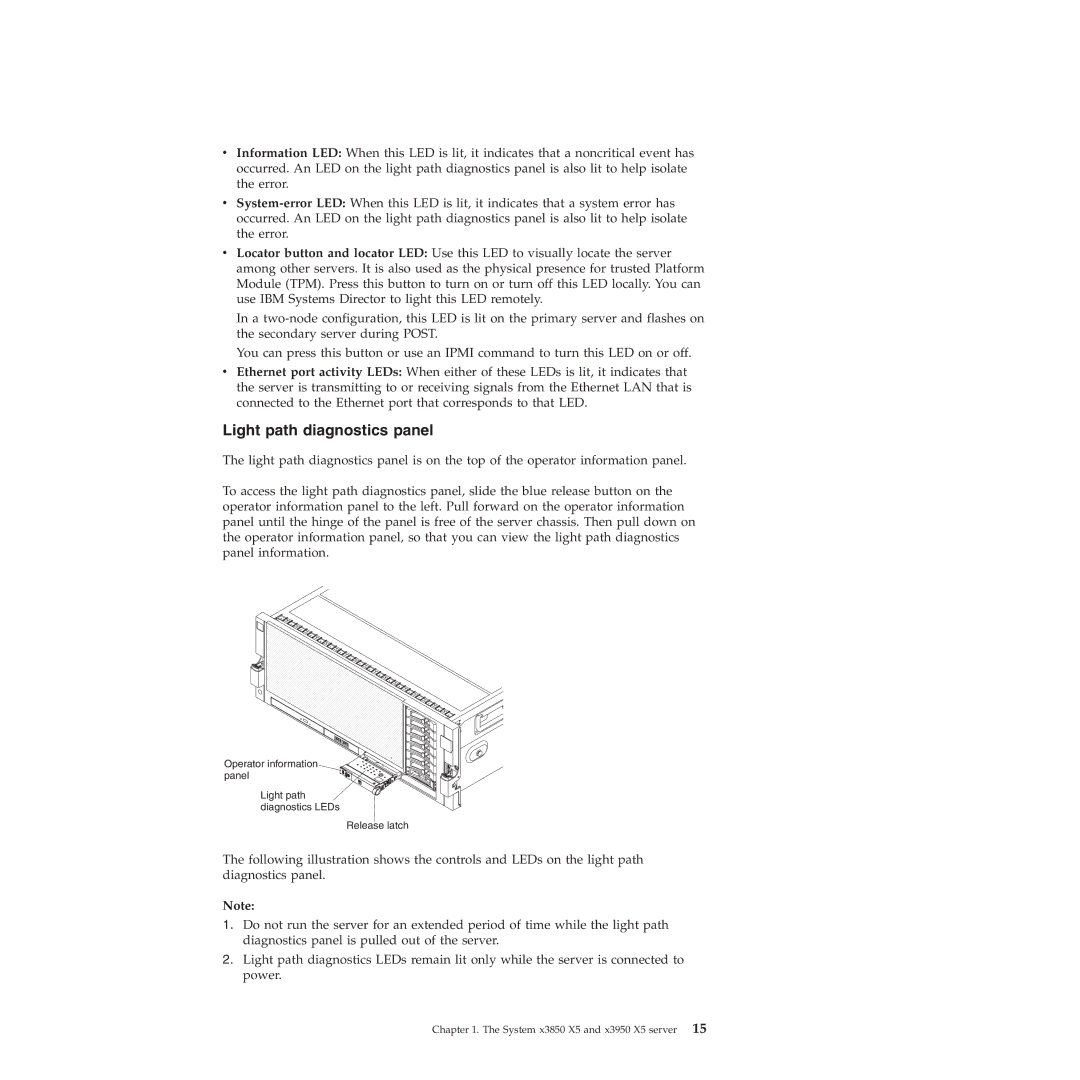
vInformation LED: When this LED is lit, it indicates that a noncritical event has occurred. An LED on the light path diagnostics panel is also lit to help isolate the error.
v
vLocator button and locator LED: Use this LED to visually locate the server among other servers. It is also used as the physical presence for trusted Platform Module (TPM). Press this button to turn on or turn off this LED locally. You can use IBM Systems Director to light this LED remotely.
In a
You can press this button or use an IPMI command to turn this LED on or off.
vEthernet port activity LEDs: When either of these LEDs is lit, it indicates that the server is transmitting to or receiving signals from the Ethernet LAN that is connected to the Ethernet port that corresponds to that LED.
Light path diagnostics panel
The light path diagnostics panel is on the top of the operator information panel.
To access the light path diagnostics panel, slide the blue release button on the operator information panel to the left. Pull forward on the operator information panel until the hinge of the panel is free of the server chassis. Then pull down on the operator information panel, so that you can view the light path diagnostics panel information.
Operator information panel
Light path diagnostics LEDs
Release latch
The following illustration shows the controls and LEDs on the light path diagnostics panel.
Note:
1.Do not run the server for an extended period of time while the light path diagnostics panel is pulled out of the server.
2.Light path diagnostics LEDs remain lit only while the server is connected to power.
Chapter 1. The System x3850 X5 and x3950 X5 server 15
